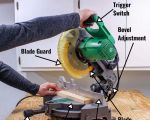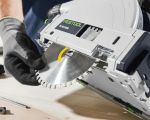- 1. Why Sharpening Your Lawnmower Blade Matters
- 2. Tools Needed for Sharpening a Lawnmower Blade
- 3. Step-by-Step Guide to Sharpening a Lawnmower Blade with a Wrench
- 4. Common Mistakes to Avoid While Sharpening Your Lawnmower Blade
- 5. Maintaining Your Lawnmower Blade After Sharpening
- 6. Real-Life Experiences with Lawnmower Blade Sharpening
1. Why Sharpening Your Lawnmower Blade Matters
A dull lawnmower blade can make mowing the lawn a difficult and frustrating task. Not only does it reduce the effectiveness of your lawnmower, but it can also damage your lawn by tearing grass rather than cutting it cleanly. This can leave the grass more susceptible to diseases and pests. Regularly sharpening your lawnmower blade is an essential part of lawn maintenance, ensuring your mower runs efficiently and your lawn stays healthy.
In addition to improving the quality of your lawn, sharpening your lawnmower blade also increases the lifespan of your mower. A sharp blade requires less energy to cut through grass, which reduces wear and tear on the engine. It can also save you time and effort, allowing you to mow faster and more effectively. Keeping your blade sharp is an easy and cost-effective way to maintain your lawnmower in top condition.
2. Tools Needed for Sharpening a Lawnmower Blade
Sharpening a lawnmower blade with a wrench is a relatively simple task, but you’ll need the right tools to get the job done efficiently. Here’s a list of tools you’ll need before starting:
- Wrench: A wrench is essential for loosening and removing the lawnmower blade from the mower. Make sure you have the correct size wrench that fits the bolt securing the blade.
- File or Sharpening Stone: A metal file or sharpening stone is needed to sharpen the blade. A sharpening stone works best for a smoother finish, while a file is more versatile for precise sharpening.
- Workbench or Stabilizer: It’s important to have a sturdy surface or a workbench to hold the blade securely while sharpening. A vice grip can also be used to hold the blade in place.
- Safety Gear: Always wear gloves and safety glasses to protect yourself from metal shards and debris while working with the blade.
- Penetrating Oil: If the blade bolt is rusted or stuck, using a penetrating oil can help loosen it before attempting to remove it with the wrench.
Having the right tools ensures that the sharpening process goes smoothly and safely, reducing the risk of injury and improving the overall results.
3. Step-by-Step Guide to Sharpening a Lawnmower Blade with a Wrench
Sharpening your lawnmower blade with a wrench involves a few simple steps. Follow this guide to get your blade in optimal cutting condition:
- Step 1: Remove the Lawn Mower Blade
Start by disconnecting the spark plug to ensure safety while working on your mower. Use the wrench to loosen the bolt that holds the lawnmower blade in place. Make sure to keep track of the bolt, washer, and any other parts you remove. - Step 2: Clean the Blade
Before sharpening, clean the blade with a wire brush to remove any grass, dirt, or debris. This will allow you to get a clearer view of the blade’s edges and ensure you sharpen it effectively. - Step 3: Secure the Blade
Place the blade on a workbench or a stable surface. Use a vice grip or other stabilizing tool to hold the blade firmly in place, making sure it won’t move while you sharpen it. - Step 4: Sharpen the Blade
Using your file or sharpening stone, begin sharpening the blade by following the existing angle of the edge. Move in one direction along the edge to avoid dulling the file. Keep the angle consistent to maintain an even edge. - Step 5: Check for Burrs
After sharpening, check for any rough edges or burrs on the blade. If any burrs remain, use the file to smooth them out. - Step 6: Reattach the Blade
Once the blade is sharp, reattach it to the mower by reversing the removal steps. Ensure the blade is secured tightly with the bolt and washer before reconnecting the spark plug.
By following these steps, you can sharpen your lawnmower blade with ease, improving its cutting efficiency and ensuring your lawn stays well-maintained.
4. Common Mistakes to Avoid While Sharpening Your Lawnmower Blade
While sharpening a lawnmower blade with a wrench may seem like a straightforward task, there are some common mistakes that can affect the results. Here are a few things to avoid:
- Not Removing the Blade Properly: Failing to properly remove the blade or using the wrong size wrench can make it difficult to perform the task. Always ensure you’re using the correct tools and techniques when loosening the blade.
- Sharpening with the Wrong Angle: Sharpening at the wrong angle can result in a dull or uneven edge. Always maintain the same angle as the original blade edge for optimal performance.
- Over-Sharpening: Sharpening too much or using excessive pressure can weaken the blade and shorten its lifespan. It’s important to only sharpen the edges and avoid altering the blade’s original structure.
- Skipping the Cleaning Step: Cleaning the blade before sharpening ensures that you have a clear view of the edge. Skipping this step can lead to an uneven sharpening process.
By being mindful of these mistakes, you can achieve a sharper and more effective lawnmower blade, enhancing your lawnmower’s performance.
5. Maintaining Your Lawnmower Blade After Sharpening
Once your lawnmower blade is sharp, it’s important to maintain it properly to ensure it continues to perform well. Here are a few tips for ongoing blade maintenance:
- Regular Cleaning: After every few uses, clean the blade to remove grass clippings and dirt. This helps prevent buildup that could affect its sharpness.
- Check for Damage: Inspect the blade regularly for any signs of damage, such as chips or cracks. If the blade becomes too damaged, it may be time to replace it.
- Lubricate the Blade: Use a small amount of oil on the blade’s pivot point to prevent rust and ensure smooth movement during use.
Proper blade maintenance will not only prolong the life of your lawnmower but will also ensure that it performs efficiently for years to come.
6. Real-Life Experiences with Lawnmower Blade Sharpening
Many homeowners have found that sharpening their lawnmower blade with a wrench significantly improved the performance of their mower. For instance, Mark, a homeowner in Florida, shared his experience of sharpening his mower blade for the first time. By following the steps carefully and using a wrench to secure the blade, he was able to achieve a cleaner cut, reduce the effort needed to mow his lawn, and keep his mower running smoothly throughout the season.
Similarly, Jane, who struggled with a dull lawnmower blade for months, found that sharpening it herself with a wrench was not only cost-effective but also incredibly rewarding. After sharpening, her mower cut the grass with precision, and she no longer had to deal with uneven patches or ragged edges on her lawn.
These real-life experiences show that sharpening your lawnmower blade is an easy, inexpensive task that can greatly enhance the quality of your lawn care. With a little effort and the right tools, you can achieve professional-level results at home.
For more information on lawnmower maintenance and the best tools for sharpening your mower blade, check out our recommendations at ToolNest, where we provide expert insights and product reviews to help you keep your lawnmower in top shape.









